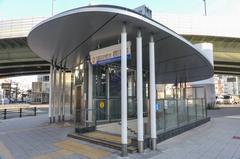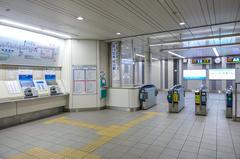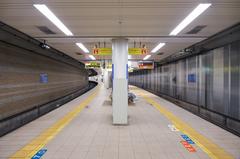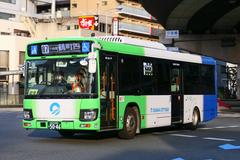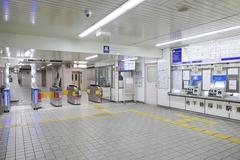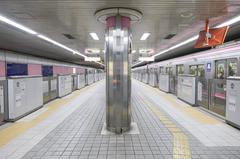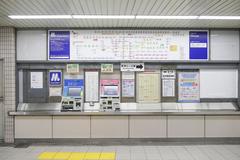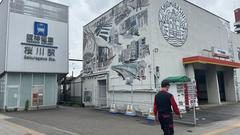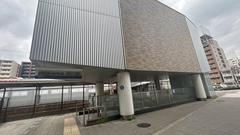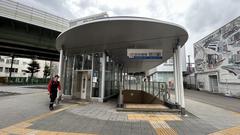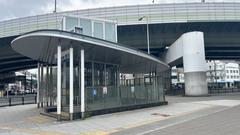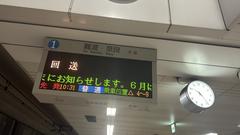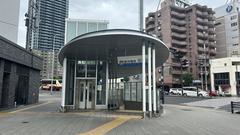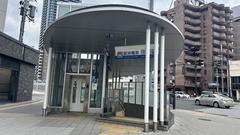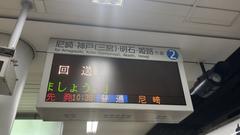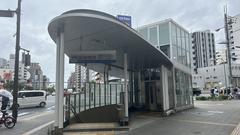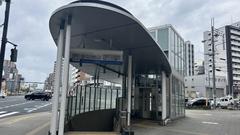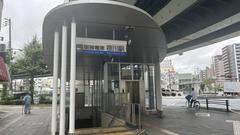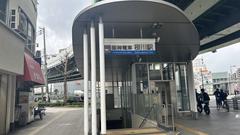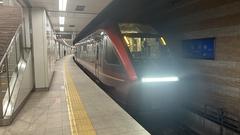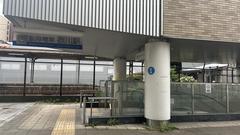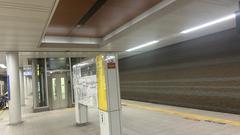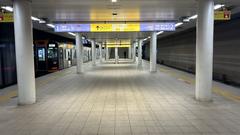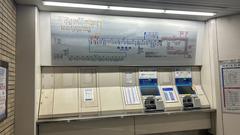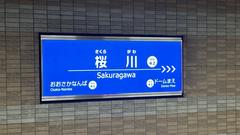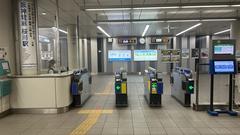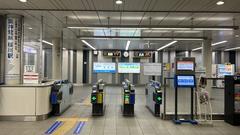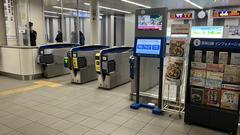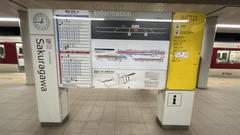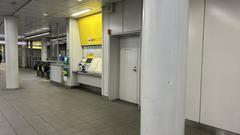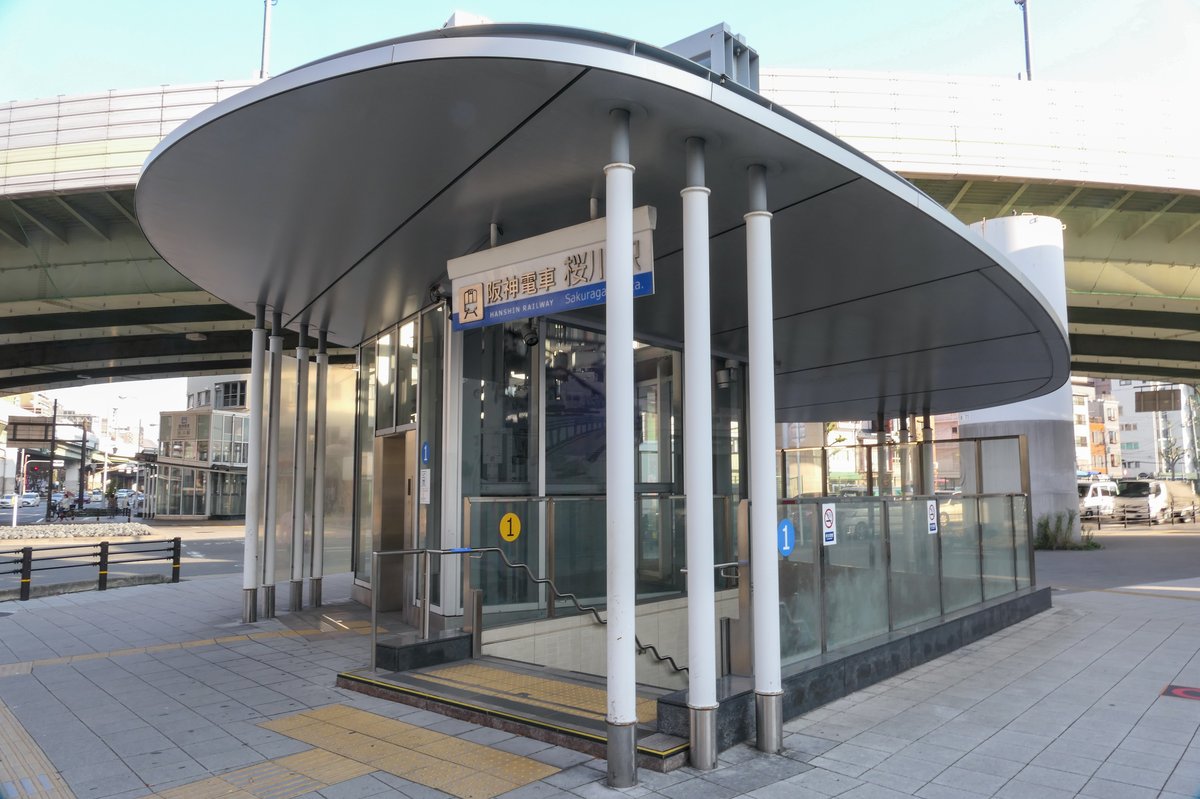
Complete Guide to Sakuragawa Station: Visiting Hours, Tickets, and Nearby Attractions in Osaka, Japan
Date: 15/06/2025
Introduction to Sakuragawa Station and Its Importance in Osaka
Nestled in Osaka’s vibrant Naniwa Ward, Sakuragawa Station (桜川駅, Sakuragawa-eki) is a pivotal transportation hub that connects the Osaka Metro Sennichimae Line with the Hanshin Electric Railway Hanshin Namba Line. Since its opening in 1969 and subsequent expansion in 2009, Sakuragawa Station has become more than a mere transit point—it now serves as a cultural gateway, reflecting the city’s unique blend of urban energy and historical depth. Its name, meaning “Cherry Blossom River,” is a tribute to the nearby Sakuragawa River and the area’s celebrated seasonal traditions.
The station operates daily from early morning until midnight, offering seamless access to key neighborhoods such as Namba, Dotonbori, and Shinsaibashi, as well as regional destinations via the Hanshin Namba Line. Modern amenities—like multilingual signage, barrier-free features, and IC card compatibility—ensure a smooth experience for both locals and tourists.
Ideally situated for access to Osaka’s cultural landmarks, shopping arcades, and entertainment districts, Sakuragawa Station enables visitors to immerse themselves in local festivals, sample iconic cuisine, and enjoy scenic walks along the river, especially during cherry blossom season.
This guide provides detailed information on visiting hours, ticketing, accessibility, attractions, and practical tips to help you make the most of your visit to Sakuragawa Station and the surrounding area. For official schedules and updates, check the Osaka Metro official site and Hanshin Electric Railway site. For deeper cultural context, ExploreCity Osaka is a recommended resource.
Contents
- Introduction
- Historical Development of Sakuragawa Station
- Origins and Growth
- Urban Integration
- Architectural Features
- Visiting Sakuragawa Station: Practical Information
- Visiting Hours
- Ticketing
- Access and Directions
- Accessibility
- Nearby Attractions and Sightseeing
- Dotonbori
- Shinsaibashi
- Minami Area
- Sakuragawa River
- Guided Tours
- Cultural Significance
- Visitor Tips
- FAQ
- Conclusion
- Sources
Historical Development of Sakuragawa Station
Origins and Growth
Sakuragawa Station opened in 1969 as part of the Sennichimae Line’s early expansion, supporting post-war urban development in Osaka (Osaka Metro official site). The extension of the Hanshin Namba Line in 2009 significantly enhanced the station’s connectivity, linking Osaka with neighboring Hyogo Prefecture and solidifying its role as a regional transfer hub. The station’s name, which translates to “Cherry Blossom River,” alludes to the nearby river and the region’s historical association with cherry trees—a symbol of the harmonious blend of nature and city life in Osaka.
Urban Integration
Located near the bustling Dotonbori and Minami districts, Sakuragawa Station has played a key role in revitalizing its surroundings, transforming them into vibrant residential, commercial, and entertainment zones (Osaka city history).
Architectural Features
The station features a multi-level design, with the Sennichimae Line underground and the Hanshin Namba Line on a separate level for efficient transfers. Bilingual signage, elevators, and escalators support accessibility (station structure details). Cherry blossom motifs throughout the station reflect its cultural heritage.
Visiting Sakuragawa Station: Practical Information
Visiting Hours
Sakuragawa Station operates daily, with services starting around 5:00 AM and running until midnight. Exact times may vary by line and day, so consult Osaka Metro for up-to-date schedules.
Ticketing
- Ticket Machines: Multilingual and accept both cash and IC cards (ICOCA, PiTaPa).
- IC Cards: Prepaid and rechargeable, usable across Osaka’s transit systems.
- Day Passes: Options like the Osaka Amazing Pass offer unlimited rides and entry to numerous attractions (Japan Welcomes You).
- Sample Fare: A typical ride from Sakuragawa to Namba costs around 190–220 yen, depending on the line.
Access and Directions
- From Osaka Station/Umeda: Take the Midosuji Line to Namba, then transfer to the Sennichimae Line for Sakuragawa.
- From Kansai International Airport: Take the Nankai Line to Namba, then the Sennichimae Line to Sakuragawa.
- From Shin-Osaka: Take the Midosuji Line to Namba, transfer to the Sennichimae Line.
Accessibility
Sakuragawa Station is fully barrier-free, with elevators, escalators, tactile paving, accessible restrooms, and multilingual signage. Staff assistance is available for travelers needing extra support.
Nearby Attractions and Recommended Sightseeing
Dotonbori District
One stop east, Dotonbori is renowned for its neon lights, street food, and nightlife (ExploreCity Osaka). Key sights include the Glico sign, canals, and lively eateries.
Shinsaibashi Shopping Arcade
A historic shopping street accessible by subway or a short walk, Shinsaibashi offers a blend of local boutiques and international brands.
Minami Area
Known for performing arts, including kabuki and bunraku, as well as a vibrant modern music scene.
Sakuragawa River
Enjoy a peaceful stroll along the river—especially beautiful during cherry blossom season.
Kyocera Dome Osaka
A short ride west to Dome-mae Station brings you to Kyocera Dome, a popular venue for sports and concerts.
Universal Studios Japan
Accessible via the Hanshin Namba Line to Nishikujo, then JR Yumesaki Line to Universal City Station (Matcha-JP).
Osaka Castle Park
Reachable with a transfer at Tanimachi 9-chome. The park is especially popular during cherry blossom season.
Day Trips
Direct connections to Kobe, Nara, and Himeji are possible, making Sakuragawa a strategic base for regional exploration.
Guided Tours
Local operators provide guided walking tours starting from or passing through Sakuragawa Station, often focusing on history, food culture, and seasonal festivals.
Cultural Significance
Sakuragawa Station’s cherry blossom motifs and strategic location make it a cultural gateway to Osaka’s traditions. The station is closely tied to events like Tenjin Matsuri and the Naniwa Yodogawa Fireworks Festival (Osaka festivals), offering visitors a window into seasonal celebrations.
Dining and Accommodation Near Sakuragawa Station
Dining
- Namba and Dotonbori: Famous for takoyaki, okonomiyaki, kushikatsu, and a variety of izakaya.
- DenDen Town: Ramen, curry, and street snacks in an electronics and anime district.
- Tsuruhashi Koreatown: Korean BBQ and street food.
Many nearby restaurants offer English or picture menus, and convenience stores provide quick, affordable meals.
Accommodation
- Tabist Sakuragawa River Side Hotel: Family-friendly and quiet, with river views (Booking.com).
- Hotel The Leben Osaka: Spacious, centrally located rooms.
- Osaka Hinode Hotel Nipponbashi: Onsen baths and cultural experiences.
- Remm Shin Osaka: Convenient for Shinkansen travel.
Book in advance during peak seasons and look for amenities like free WiFi and laundry services.
Essential Visitor Advice
- Luggage Storage: Coin lockers are available for secure bag storage.
- WiFi: Free WiFi in the station and many hotels; consider renting pocket WiFi for continuous connectivity.
- Language: English signage is common, but translation apps are helpful in restaurants.
- Weather: June is rainy; bring a compact umbrella and stay hydrated (Live Japan).
- Safety: Osaka is generally safe, but remain vigilant in crowded areas and observe local etiquette on trains.
FAQ
Q: What are Sakuragawa Station’s operating hours?
A: Approximately 5:00 AM to midnight, varying by line and day.
Q: How much do tickets cost?
A: Fares start at around 180–220 yen for nearby destinations; day passes and IC cards offer convenience and savings.
Q: Is Sakuragawa Station accessible for travelers with disabilities?
A: Yes, with elevators, escalators, tactile paving, and accessible restrooms.
Q: Are there guided tours near Sakuragawa Station?
A: Yes, many tours covering historical sites and food culture depart from the area.
Q: Can I store luggage at Sakuragawa Station?
A: Coin lockers are available in the station.
Visual Guide
- Images of Sakuragawa Station entrances, ticket machines, and concourse
- Photos of Dotonbori, Osaka Castle, and Universal Studios Japan
- Map highlighting connections and nearby attractions
- Dining and hotel visuals (e.g., Tabist Sakuragawa River Side Hotel)
Conclusion
Sakuragawa Station stands as an essential gateway in Osaka, combining convenience, accessibility, and cultural significance. Its strategic location near major attractions, seamless transit connections, and comprehensive amenities make it an excellent starting point for exploring Osaka and beyond. Take advantage of IC cards or tourist passes for smooth travel, enjoy the local cuisine and historical sites, and plan your journeys around the station’s operating hours for a memorable visit. For the latest information, download the Audiala app and consult official resources before your trip.
Sources and Further Reading
- Sakuragawa Station: Visiting Hours, Tickets, and Exploring Osaka’s Historical Gateway, 2025 (Osaka Metro official site)
- Sakuragawa Station Osaka: Visiting Hours, Tickets, Accessibility, and Nearby Attractions, 2025 (Osaka Metro station guide)
- Exploring Sakuragawa Station: Visiting Hours, Tickets, Transportation, and Nearby Attractions in Osaka, 2025 (Japan Welcomes You)
- Sakuragawa Station Visitor Guide: Hours, Tickets, Dining & Accommodation Near Osaka Historical Sites, 2025 (Japan Experience)
- Osaka city history, 2025 (Osaka Info)
- ExploreCity Osaka, 2025 (ExploreCity Osaka)
